Genital papillomatosis increases the risk of infection for both partners and complicates intimate life, and during childbirth it is often transmitted from woman to child.
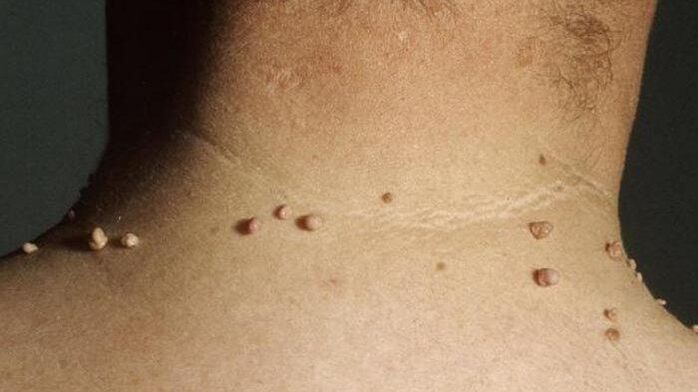
cause
The main cause of tumor formation is HPV, which enters the body in various ways. It is inserted into the squamous epithelial cells and remains in them for a long time without being detected. The patient may not be aware of such an infection until the prerequisites for its multiplication and the appearance of neoplasms arise. With decreased immunity, growths often appear on the body.
Experts identify factors that increase the risk of growth:
- frequent stress;
- nervous, physical overwork;
- avitaminosis;
- decreased immunity;
- old age of the patient;
- too many sexual partners;
- smoking, alcohol abuse;
- taking oral contraceptives for a long time.
The cause of papilloma can be hidden in endocrine disorders, pathology of the digestive system, and overweight. The incubation period lasts about a year and if the immune system is functioning well, the infection may not be noticeable. HPV is often transmitted through contact with infected objects in daily life, when using regular wipes, razors and towels. Infection can occur through sexual intercourse or from a woman to a child during childbirth.
Views
Dermatologists distinguish several types of papillomas:
- Easy. The neoplasm looks like a cauliflower or a chicken’s nest, its surface resembling small papillae.
- Plantar. This formation causes little discomfort.
- rata. The site of localization of the neoplasm is the cervical epithelium. Flat papillomas look like itchy flat nodules.
- filamentous. Such tumors are often found in patients over 50 years of age, look like small nodules and do not cause the development of obvious symptoms.
- Pointing. They resemble papillary formations, which are localized as separate elements and merge into a whole group. In each case, genital warts are provoked by a specific type of virus transmitted during sexual intercourse. The place of formation of genital warts is the intimate zone, groin, anus, perineum.
Angiopapilloma is an internal growth formed of connective tissue. It attaches to the vascular wall and is capable of triggering the development of cancer.
Neoplasms in visible areas of the body and in intimate areas often cause psychological discomfort and problems in sexual activity. The formation of papillomas in the uterus can end in cancer.
Kind of
There are several types of HPV, taking into account the possibility of cancerous lesions on the skin and internal organs.
Squamous
The appearance of papillomas is due to the rapid growth of the squamous epithelium of the epidermis. In young people, this type of neoplasm can form in areas of the body that are too frequently injured.
Squamous cell papillomas are round -shaped tumors with a broad base and neoplasms with thin stems. At the beginning of their development, they are immobile, colored in light or brown tones. Persistent trauma to such formations can trigger their inflammation, cell mutations begin and their transformation into cancer. If there is no effective treatment, there is a high risk of getting cancer.
upside down
Quite rarely, inverted papillomas appear on the body. The areas of appearance are the nasal cavity and the paranasal sinuses. Growth of neoplasms in the frontal and maxillary sinuses is possible.
Characteristic manifestations of papillomavirus are unilateral lesions. The proliferation of reverse growths in bone is possible, ending with lesions on the palate, skull bones, nasal sinuses, and orbital walls.
Large inverted papillomas cause nasal congestion, bleeding and runny nose. When the tumor grows to a large size, the facial skeleton becomes deformed and shifts to the side of the affected organ of vision.
Localization
Skin papillomas can form in various parts of the body. Discomfort is caused by tumors on the face, and when placed on the body, they are always injured when in contact with clothing.
Specialists identify several places where papillomas occur:
- Areas of the groin, armpits and lower abdomen with obesity. In the fairer sex, various types of neoplasms can be localized under the breast.
- Neck area, face, abdomen, back. On the face, the papilloma area mainly becomes the area of the mouth, eyes, eyelids.
- genitals. This area is often the site of genital warts.
- Internal organ. Neoplasms appear in the tissues of the intestine, stomach and bladder.
- feet. Often, spinal warts appear on this part of the body.
The place of appearance of viral neoplasms can be the oral mucosa, bladder, mammary glands, internal genital organs.
Symptoms of education
When HPV is activated, neoplasms of various types appear on the skin. Their signs are similar to each other, but there are differences.
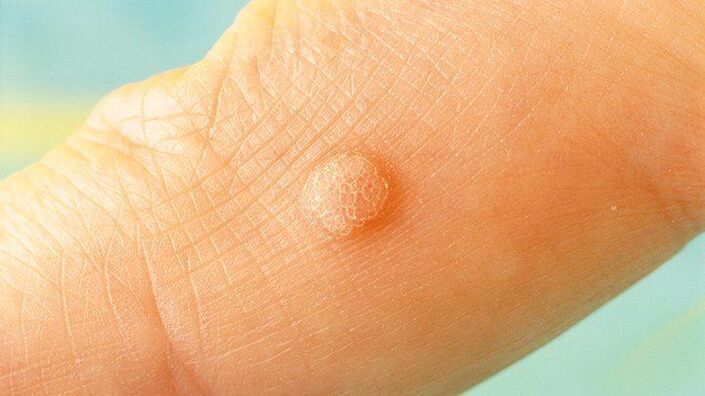
Warts
You can determine the formation of warts on the skin according to certain symptoms:
- tumor size does not exceed 1 cm;
- warts have clear external boundaries, non -homogeneous surfaces and density felt on palpation;
- build color can be from light gray to black;
- the neoplasm has an irregular round shape.
Growth localization sites are mainly open areas of the body, and especially those that are constantly injured by something. Warts often appear on the hands, fingers, knees, and head in areas of hair growth.
Papilloma
You can diagnose growth independently if you know the appearance of the papilloma body. It is a skin growth with a relatively thin stem or a flat base. Most viral infections occur in public places with high humidity. In such an environment he feels ideal and begins to reproduce rapidly.

Patients need to know what a papilloma looks like on the body. The first sign of a tumor is a slight burning sensation, a slight tingling sensation in the epidermis. After a while, neoplasms appear in this zone. Gradually they stretch and lengthen, their size increasing to 1-1. 5 cm.
Often, papillomas on the skin form in elderly patients and begin to actively increase in size. The areas where the tumor is located are the chest, groin area, and the area under the armpits. They are flesh -colored or slightly yellowish. The presence of the virus in a woman’s body significantly increases the risk of getting cervical cancer.
Warts

Genital warts form under the influence of certain types of HPV, which enter the bloodstream exclusively through sexual intercourse. Typically, the anal area and external genital organs, rarely the oropharynx, become the focus of growth localization.
Warts are papillary growths that form on various parts of the body. The individual elements often connect with each other and form tumors that resemble chicken combs in appearance.
Incubation period
The papilloma virus has a long incubation period that can last for many years. This means it is quite difficult to determine when an infectious agent has entered the body. Viral activity can increase under the influence of various factors that interfere with the functioning of the immune system.
Once in the body, the virus is inserted into the nucleus of dermis cells and begins to multiply there rapidly. With a decrease in the body’s defenses, small papillae begin to appear on the surface of the skin, which include several cells. They grow slowly and can reach 10 cm.
Diagnostics
Diagnosis of papilloma begins with examination of the patient by an immunologist or dermatologist. The patient's history and symptoms were examined. Laboratory and instrumental studies help identify the cause of the appearance of neoplasms in the body.
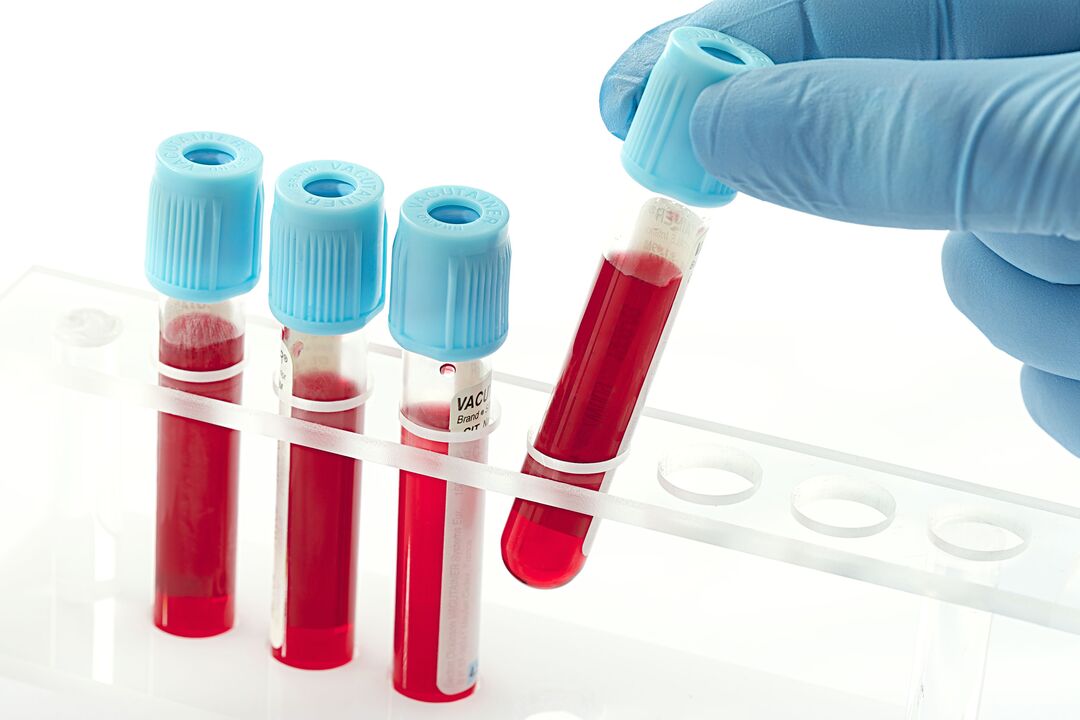
Standard diagnostic programs include:
- general blood and biochemical tests;
- PCR test;
- material biopsy.
Based on the research results, effective and safe methods of therapy are selected.
Treatment
It is recommended to start treating the papilloma as soon as it is detected. The choice of method depends on the area of localization of the neoplasm, the reason for their appearance, the form of HPV. How to quickly cure a papilloma can only be determined by a specialist.
Cryocoagulation
With this method of therapy, the neoplasm is removed with liquid nitrogen, which causes the water in the cells to freeze and die. Cryodestruction is only performed if the tumor is benign and there are no cancer cells in it.
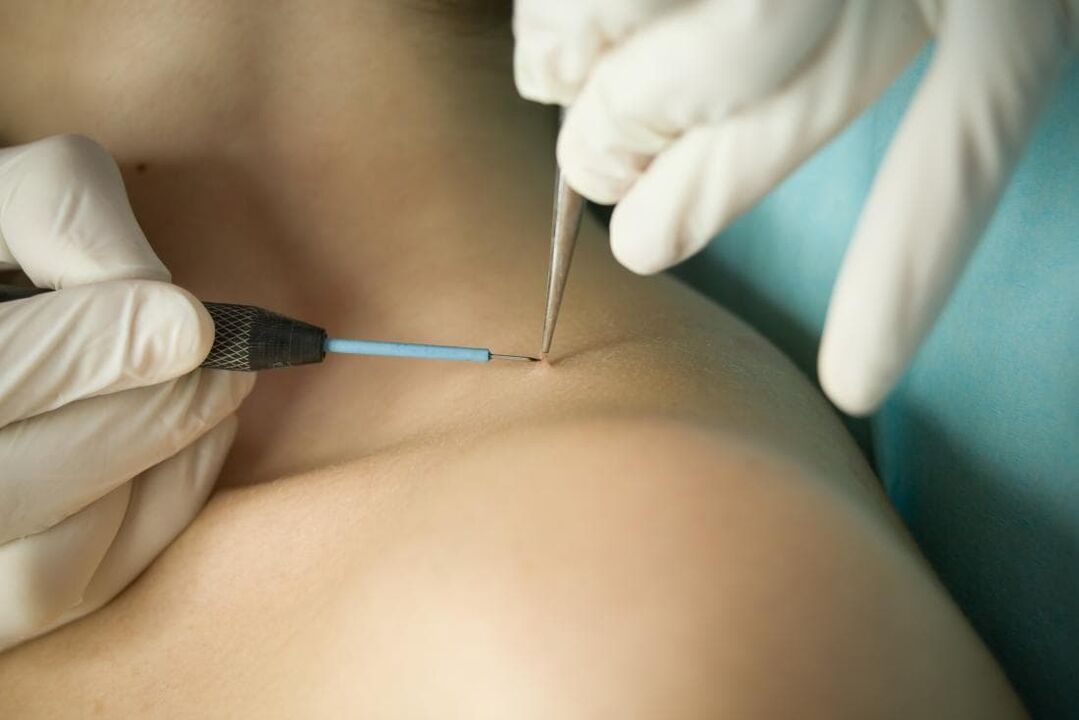
The procedure is considered painless, but if the skin is too sensitive, they use the introduction of novocaine. After treatment of the skin with liquid nitrogen, they turn white and small bubbles are formed, in which a transparent or pink liquid accumulates. When removing growths by freezing, unpleasant sensations in the form of burning sensations may appear, but they gradually disappear. After cryodestruction, it is recommended to treat the epidermis with a solution of potassium permanganate or boric alcohol several times during the day.
After a few days, the bladder ruptures and a crust forms, which protects the wound from infection. Over time, it disappears and healthy skin remains underneath.
Surgical methods
Surgery to remove papillomas on the skin is considered the most radical method of removal, but it is not used so often. The indication for surgery is a large papilloma.
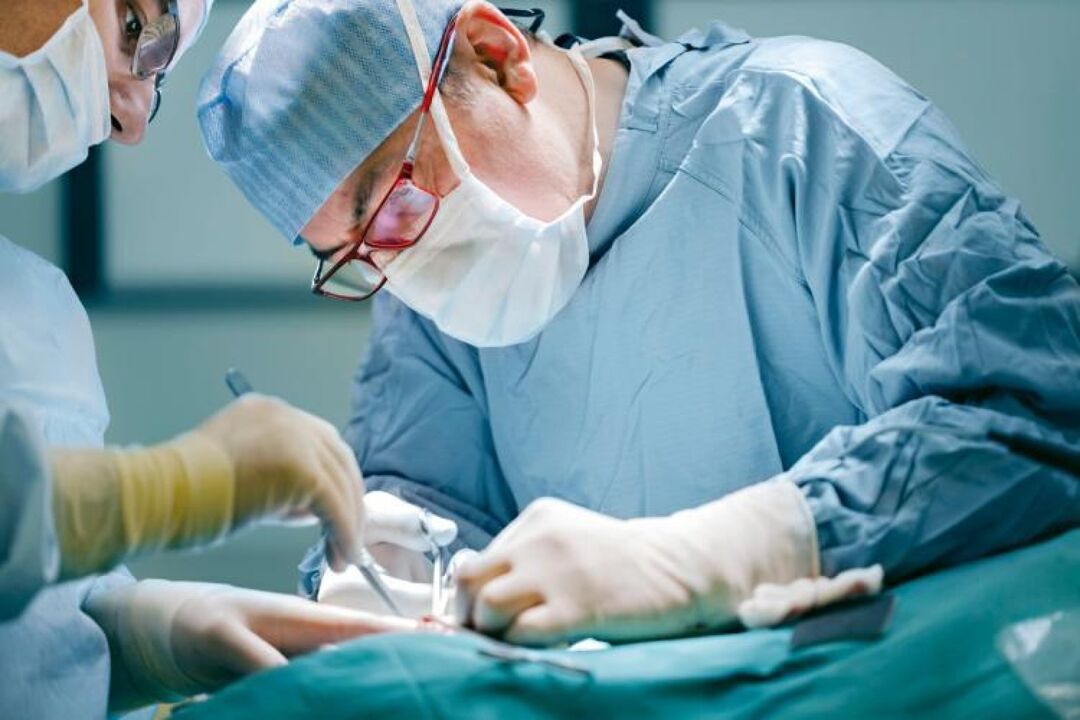
During the operation, the doctor removes a small area of healthy tissue, which prevents the regeneration of growth. The procedure is performed under local anesthesia and lasts no more than 10-15 minutes. The patient felt no pain, and after completion of the manipulation, sutures were applied. The disadvantage of this method is considered to be a long period of wound healing, the formation of scars, scars on the body.
Laser removal
How the papilloma will be treated is decided by the doctor after examining the patient. The most modern method of removing tumors is considered to be laser treatment, before analysis is done to exclude cancer cells. The area of the body where the papilloma is located is anesthetized with lidocaine. Then they act on it with a laser beam and remove it completely. When treated in this way, water evaporates in the damaged cells, they dry out and form crusts.
After a while, the skin becomes red, swollen, but this reaction occurs after 2-3 days. The crust falls off on its own after 5-7 days and instead appears a fine pink skin.
Chemical attack
An effective way to combat the pathology is considered to be a chemical effect on the papilloma. Removal of genital warts is performed with special preparations containing organic acids.
With the help of an applicator, it is applied to the surface of the formation and it is baked. Under the influence of chemicals, growth cells are destroyed, and they disappear.
Treatment with drugs
Medical treatment for papilloma includes:
- pill. Infection with the virus occurs due to decreased immunity, therefore, the action of the drug is aimed at increasing the body's defenses. Patients are prescribed to take vitamins, immunomodulators, antiviral agents.
- Preparation for local treatment. A good effect is the use of creams and ointments with antiviral action. For small tumors on the penis, gels and creams are selected that stimulate interferon production. To remove the tumor, the doctor prescribes a solution with cauterizing properties.
Only a doctor can determine whether to remove papillomas in various parts of the body.
Immunomodulator
How to treat various papillomas on the body depends on their size and area of localization. The integrated approach involves treatment with immunomodulators, actions that activate the body’s natural defenses.
There are several types of HPV, so the drug should be chosen by a specialist after an immunological study. With papillomas in women, it is recommended to pay special attention to natural immunomodulators that help restore immunity at the DNA level.
Self -deletion
Treating large papillomas at home can worsen a person’s condition and cause the virus to spread throughout the body. The possibility of using funds for self -removal of growths is determined by a dermatologist. This method of treatment is possible only in the absence of oncogenic factors and suspicion of malignant growth.
Self -treatment of benign neoplasms includes the use of topical ointments, medications prescribed by a doctor.
Traditional treatment methods
In addition to the treatment regimen chosen by the doctor, it is permissible to use alternative treatment methods. It is possible to stop the intensive growth of papilloma and trigger its destruction when rubbed with celandine, dandelion or sour apple juice.

You can lubricate the neoplasm with fresh egg protein daily and wait for it to dry. After a while, the dry papilloma will fall off on its own. At the pharmacy, you can buy special adhesive tape, which is glued for a long time, and then the neoplasm is cleaned.
To remove the defect, it is recommended to cut a clove of garlic and rub the growth on the skin with it for several days in a row.
Treatment with home and folk remedies is a long process. For higher efficiency, it is recommended to combine it with taking drugs that have antiviral effects.
Prophylaxis
Prevention of human papillomavirus is possible by maintaining body hygiene, timely treatment for any injuries to the epidermis and its healing. To prevent infection, you must use personal hygiene products.
Papilloma prevention involves the rejection of casual sexual intercourse, adherence to a healthy lifestyle, and increased immunity. This virus is able to be a factor that provokes the formation of papillomas in the cervix and the development of cancer. Women should regularly visit a mamo specialist with a gynecologist, make sure you adhere to proper nutrition. What to do if a papilloma is detected, it is recommended to ask your doctor and not to self -medicate.














































































